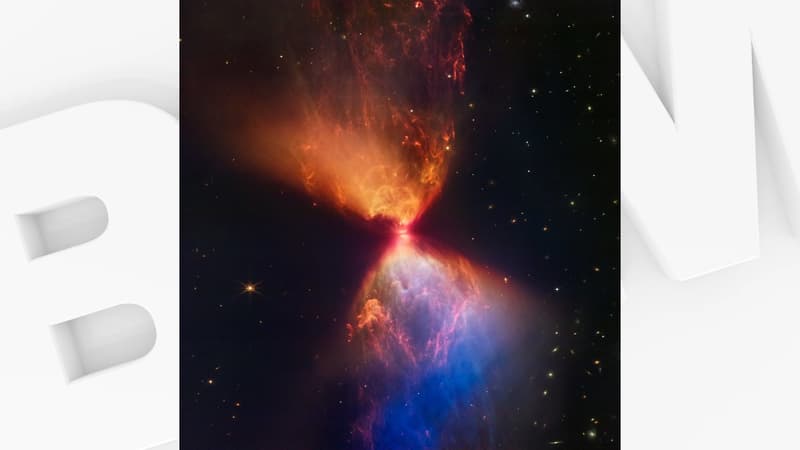James Webb offers a fascinating new snapshot. The space telescope revealed bright new images on Wednesday of a huge hourglass-shaped cloud of dust around a forming star. These previously hidden orange and blue clouds have been made visible by the telescope’s NIRCam instrument, which operates in the near-infrared, a wavelength invisible to the naked eye.
The very young star, known as “protostar L1527” and located in the constellation Taurus, is hidden in darkness by the edge of a spinning disk of gas at the neck of the hourglass. But light from this protostar “seeps” above and below this disk, illuminating cavities in the surrounding gas and dust, NASA and the European Space Agency (ESA) explained in a joint statement.
The clouds are created by material ejected from the star colliding with the surrounding material. The powder is finer in the blue parts, thicker in the orange parts. At only 100,000 years old, the protostar is in the earliest stage of its formation. It is not yet capable of generating its own energy.
Information about the beginnings of the solar system.
The surrounding black disk, roughly the size of our solar system, will supply the protostar with materials until it reaches “the threshold necessary to initiate nuclear fusion,” according to NASA and ESA research.
“Ultimately, this view of L1527 provides a window into what our early Sun and solar system looked like,” the two agencies added.
The Molecular Cloud in Taurus, located about 430 light-years from Earth, is a stellar nursery for hundreds of nearly formed stars.
The James Webb, whose first color images were released in July, is making its observations 1.5 million kilometers from Earth. One of the main purposes of this $10 billion telescope is to study the life cycles of stars.
Source: BFM TV


